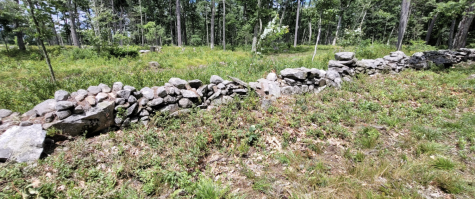Ancient New England: the unknown history in our own backyards
October 5, 2022
When one thinks of ancient history, they often think of the ruins of Greek city-states, the Egyptian pyramids, or the extraordinary engineering of Rome. Occasionally, some may also be reminded of the warriors of the Mongolian steppes, or the eastern empires of Persia, China, and India, or the massive stone-age cities of Central and South America. Lesser known but still recalled are the mysterious sea-farers of the Pacific, and the skilled hunters of the frozen north. However, few people think of New England as having ancient history.
Throughout elementary, middle, and high school, we are taught a great deal about these foreign ancient civilizations. Of course, no education would be complete without discussing the finer points of Greek government, Rome’s conquests, or Egypt’s architectural feats, and indeed more should be taught about ancient civilizations in Africa, Asia, the Pacific, and South America as well. Yet, when we learn about the indigenous people of New England in school, it is mostly in the context of the colonial period.
This discussion is generally prefaced by a lesson on Christopher Columbus, which is simply dumbfounding considering Columbus never stepped foot on mainland North America, and certainly never in New England. Then, we learn about the Pilgrims and the first Thanksgiving. From there, the Native Americans seem to be a backdrop to American history education, forming the barrier separating the frontier from western civilization; a barrier which is slowly pushed toward the setting sun, following it into oblivion.

Yet the people of New England thrived long before the arrival of the Pilgrims, or even Columbus. The first evidence of human populations living in New England date back long before 10,000 years ago, when the region was a frozen tundra in the shadows of receding glaciers. For thousands of years, these people created civilizations of their own, with their own rich history and tradition, culture, and indeed technology.
While our understanding of complex ancient architecture is limited to Europe, especially the Mediterranean, new research shows that there may be significant megalithic (prehistoric stone) structures in North America, with a concentration in New England. Structures include stone chambers, cairns, walls, and stacked-stone effigies. Once thought to be the remains of colonial farms and homesteads, these structures have since been proven to be constructed prior to the colonization of New England. A battery of tests, including radio-carbon dating of organic matter found within the structures, and optically stimulated luminescence testing of soil samples and stones in the structures have suggested that many of these ‘colonial’ structures were in fact made hundreds if not thousands of years before European exploration of the New World.
So what does this mean for education in America? Our lessons are focused firmly on the societies of the Old World. Euro-centric history fills every classroom, leaving little room to discover the mysteries that are to be found in our own backyards. Just because we do not yet fully understand the ancient history of New England certainly does not mean that it should be ignored. High school and college students across the country travel to Europe on expensive trips to see ancient ruins there, yet if you asked any of them, they may not know that there are also ancient ruins in North Stonington and Lyme, Connecticut, or Salem, New Hampshire (where these two images are from), and many hundreds more.
It is a shame to think about how many thousands of New England’s pre-historic sites were simply bulldozed over, thinking they were just more colonial foundations and root cellars, to make room for highways, shopping malls, and subdivisions. Simply expanding our education system to include the histories of all people, from all parts of the world, may help us to avoid similar blunders in the future. We need to accept the possibility of complex societies, with their own culture, history, technology, and values forming outside of the Old World, because ancient history is all around us, possibly even in our own backyards.




Eddie Fisher • Oct 13, 2022 at 8:45 pm
I have seen many stone walls. Being a surveyor in the 70s, many trails from so long ago. Boundaries that trace back hundreds of years. Great times not knowing that I was in the company of great boundaries.